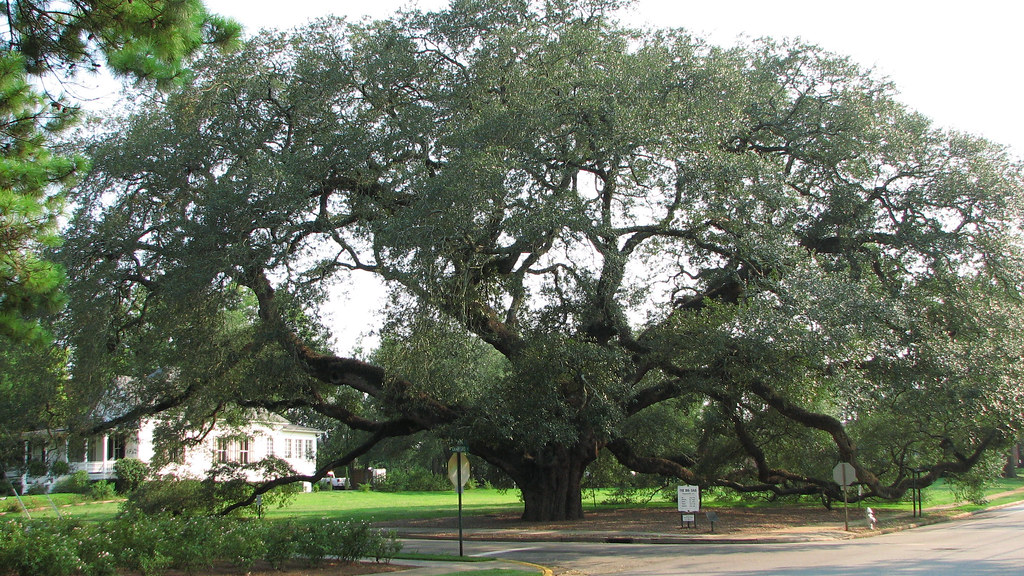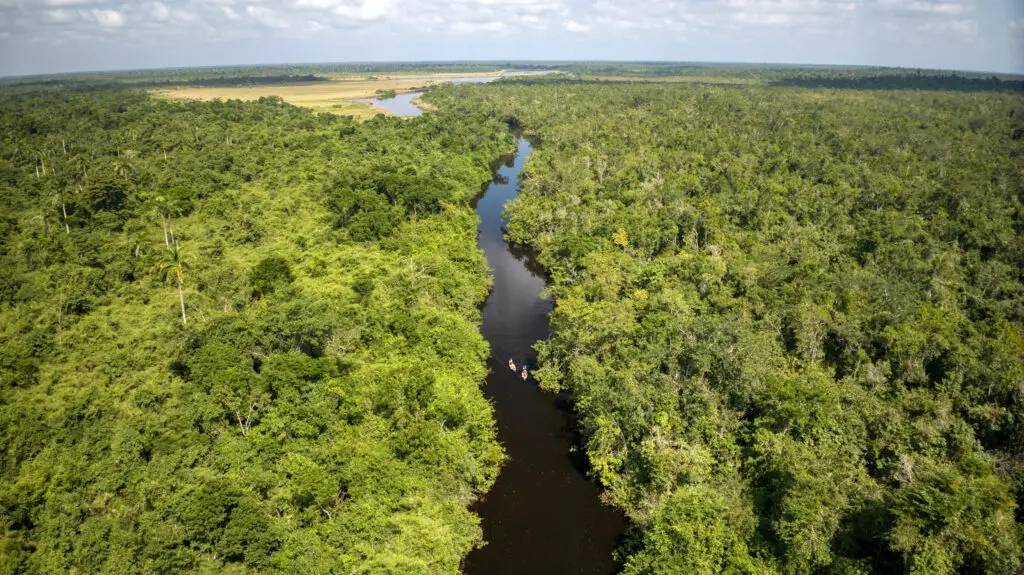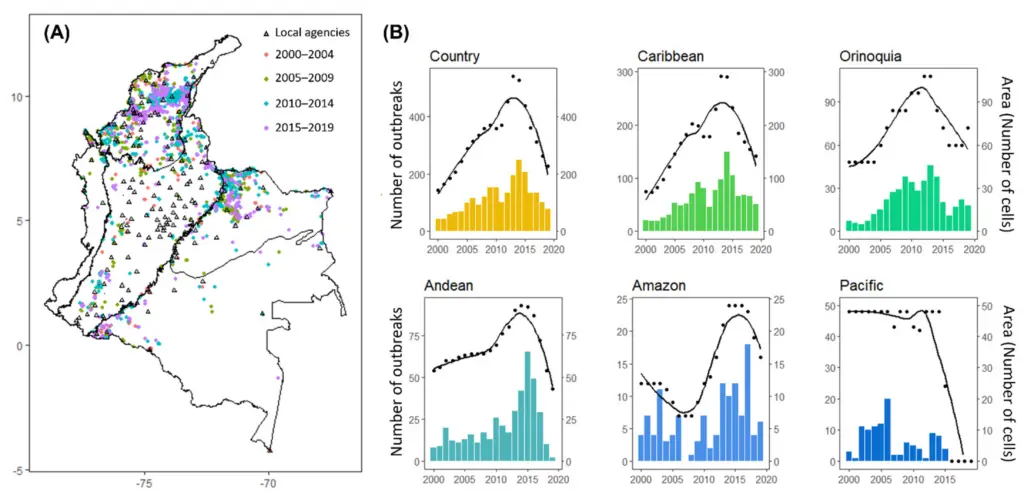A tree’s age can be determined by looking at its rings. The number of rings a tree has corresponds to the number of years it has been alive. The width of the rings also provides information about the tree’s age.
Thick rings indicate good growing conditions, while thin rings signify unfavorable conditions.
Do you ever wonder how old a tree is? Well, there’s an indicator that can give you a pretty good estimate! It’s called the tree age calculator, and it works by looking at the number of rings in a tree’s stump.
The more rings there are, the older the tree is. This method isn’t 100% accurate, but it’s a pretty good way to get an idea of how old a tree is. So next time you’re out for a walk in the woods, take a look at some stumps and see if you can guess the ages of the trees they came from!
Tree Age Calculator
Place the Diameter and Species for your desired tree
Diameter:
Tree Species:
How Can I Tell How Old a Tree is
You can tell how old a tree is in a few ways. One way is to look at the size of the tree. If the tree is very big, it is probably old.
Another way to tell how old a tree is by looking at the leaves. If the leaves are small and green, the tree is probably young. If the leaves are big and yellow, the tree is probably old.
Are There Any Reliable Methods for Estimating the Age of Trees
Yes, there are a few reliable methods for estimating the age of trees. One common method is to count the number of growth rings visible on a cut section of the tree trunk. Another method is to measure the tree trunk’s diameter at breast height (4 feet above ground level).
The average growth rate for most trees is about 1/8 inch per year, so you can divide the diameter by 8 to estimate the tree’s age in years.
What are Some Common Indicators of a tree’s Age?
A tree’s age can be determined by looking at a number of indicators, including the size of the tree, the type of leaves it has, the number of branches it has, and the thickness of its trunk. The size of a tree is perhaps the most obvious indicator of its age. A taller tree is usually an older tree, while a smaller tree is typically younger.
The type of leaves a tree has can also be telling. For example, deciduous trees like maples and oaks tend to live longer than evergreens like pines and spruces. The number of branches a tree has is another good indicator – generally, older trees have more branches than younger ones.
Finally, the thickness of a tree’s trunk can also give clues about its age; thicker trunks usually mean an older age, while thinner trunks are often indicative of youth.
Rabbit and Mouse DAMAGE to TREES is an Indicator of…
Tree Age Calculator
How old is that tree? It’s a question we’ve all asked at one time or another. While there’s no surefire way to determine the age of a tree without cutting it down, there are some methods you can use to get a pretty good estimate.
The most accurate way to calculate the age of a tree is by looking at its growth rings. If you can count the number of rings, you’ll have a good idea of how old the tree is. However, not all trees are created equal regarding their ring counts.
Some trees grow faster than others, so their growth rings may be wider. Additionally, some trees may have missing or damaged rings, making counting them more difficult. You can try the stumpage method if you’re having trouble getting an accurate count.
This involves measuring the diameter of the tree’s trunk at breast height (4 feet above ground level) and using a chart to estimate its age. Once you estimate how old your tree is, take some time to appreciate all it has seen and accomplished in its lifetime!
How to Tell the Age of a Tree Without Cutting It Down
It’s not always easy to tell the age of a tree without cutting it down. There are, however, some things you can look for that can give you a clue. Here are a few:
- The number of branches on the tree. A younger tree will typically have more branches than an older one.
- The size of the leaves. Older trees usually have larger leaves than younger trees.
- The color of the bark. As trees age, their bark tends to darken in color.
- The texture of the bark. Older trees often have rougher, more furrowed bark than younger ones.
- The shape of the trunk. Younger trees tend to have straight trunks, while older ones may be more crooked or bent.
How to Count Tree Rings for Age
Counting tree rings is a common method for determining the age of a tree. This process is also referred to as dendrochronology. By counting the number of growth rings, you can estimate how old the tree is.
The width of each ring can also provide information about the conditions during that particular year, which can help reconstruct past climates. To count tree rings, first look at the tree trunk and find a section that has been cut or broken off. This will give you a cross-section of the tree where you can see all of the growth rings.
Starting from the outside, count each ring until you reach the tree’s center. Each ring represents one year of growth for the tree. The width of each growth ring can also provide clues about what conditions existed during that particular year.
For example, wider rings usually indicate periods with ample rainfall and ideal growing conditions, while narrower rings tend to occur during times when there is drought or other adverse conditions. By looking at patterns in tree-ring widths over time, scientists can better understand past climate conditions.
Tree Age App
If you’ve ever wondered how old that tree is, there’s now an app. Tree Age is a new app that uses artificial intelligence to estimate the age of trees. A team of researchers from the University of Washington and Microsoft Research developed the app.
It works by analyzing photos of trees to look for clues about their age. The app can currently estimate the ages of Douglas fir, western hemlock, and red cedar trees with up to 80 percent accuracy. The team is now working on expanding the app to work with other types of trees as well.
In the future, they hope to add features that would allow users to learn more about the ecology of their local area. If you’re interested in learning more about your local flora, Tree Age is definitely worth checking out.
Maximum Age of Tree
Many factors, including species, growing conditions, and climate, determine a tree’s maximum age. In general, however, the oldest trees in the world are several thousand years old. The oldest known living tree is a bristlecone pine (Pinus longaeva) in California’s White Mountains, which is estimated to be over 5,000 years old!
Other exceptionally old trees include a sequoia (Sequoiadendron giganteum) in the Sierra Nevada mountains of California that are thought to be around 3,500 years old, and a yew (Taxus baccata) in Shropshire, England, that is believed to be over 2,000 years old. While these individual trees are certainly impressive in their longevity, it’s important to remember that they are outliers; most trees only live for a few hundred years. Still, even a shorter lifespan can provide numerous benefits to both people and the environment.
Trees help clean the air and water we breathe, provide homes for wildlife and shade from the sun, and beautify our landscapes. So whether you’re planting a new tree or caring for an existing one, remember that you’re helping to create something with the potential to live on long after you’re gone!
The Age of the Tree Can Be Estimated by
It’s not rocket science, but you can estimate the age of a tree by its rings. The number of rings corresponds to the years the tree has been alive.
Counting the rings is a pretty straightforward process, but it does require a cross-section of the tree trunk. You can use a saw to cut through the bark and wood until you reach the center of the trunk. Once you have your sample, count the rings from the outside in.
The outermost ring is the tree’s initial growth stage, while each subsequent ring represents one year of growth. Now that you know how to count a tree’s age using its rings, you might wonder how scientists determine when each ring was formed. They do this by studying changes in cell structure that occur during different seasons.
For example, spring growth tends to be wider than summer or winter growth because more moisture is available for cell expansion during this time of year. By looking at these differences under a microscope, scientists can create a timeline for when each ring was formed. Tree-ring dating isn’t an exact science, but it can give us clues about past climates and environmental conditions.
This information can help us better understand our impact on the planet and make more informed decisions about managing our resources in the future.
Frequently Asked Questions:
How to calculate a trees age?
To calculate a tree’s age:
Count Rings: Count annual growth rings in the tree’s trunk.
Use Increment Borer: Extract a core sample using an increment borer and count rings.
Diameter and Growth Factor: Estimate age based on tree diameter at breast height (DBH) and species-specific growth factor.
Historical Records: Consult records for planting or growth history.
Professional Arborist: Seek expert assistance for accurate age assessment.
How thick is a 100 year old tree?
The thickness of a 100-year-old tree can vary widely depending on its species and growth conditions. On average, it might have a diameter ranging from approximately 12 to 36 inches (30 to 91 centimeters) at breast height, but this can significantly differ for different tree species and environmental factors.
What is DBH and tree age?
DBH (Diameter at Breast Height) is a measurement of a tree’s trunk diameter taken at approximately 4.5 feet (1.37 meters) above the ground. It is commonly used in forestry and arboriculture for assessing tree size and growth.
Tree age and DBH are related because you can estimate a tree’s age using its DBH and the growth factor specific to its species. The formula is:
Tree Age = DBH / Growth Factor
This estimation provides a rough idea of a tree’s age based on its diameter.
Conclusion
A tree’s age can be measured by looking at its rings. The number of rings a tree has corresponds to the years it has been alive. The width of the rings also tells us about the conditions the tree was growing in – wider rings mean the tree had access to more resources like water and sunlight, while narrower rings indicate periods of stress or hardship.
We can learn about past climates and environmental conditions by studying a tree’s ring patterns.





 Dr Ahsanur Rahman, PHD
Dr Ahsanur Rahman, PHD



